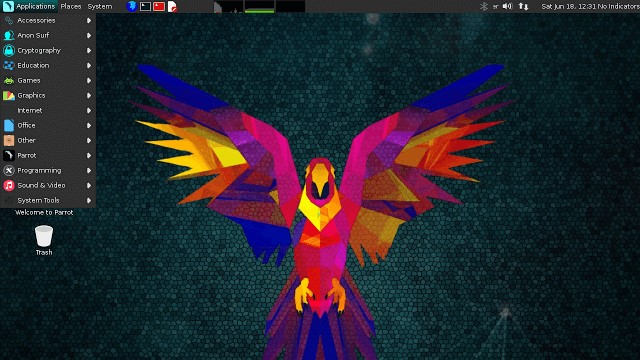
- Parrot security os cheetsheet install#
- Parrot security os cheetsheet update#
- Parrot security os cheetsheet upgrade#
Remove useless files from the APT cache: $ sudo apt-get autocleanĪutoclean is another method used to clear out the local repository of downloaded package files, just like clean. Use apt-get clean to free up disk space when necessary, or as part of regularly scheduled maintenance. It removes everything except the partials folder and lock file from /var/cache/apt/archives/. The clean command clears out the local repository of downloaded package files. /var/cache/apt/archives/ Clear the APT cache: $ sudo apt-get clean.*Packages that depend on the being reinstalled will not be removed from the system APT cache files: This will completely remove the package from the system* and reinstall it.
Parrot security os cheetsheet install#
If you need to force reinstall a package, just pass the -reinstall flag $ sudo apt-get -reinstall install īy passing the -reinstall flag, you will effectively force the package to be reinstalled even if it’s already installed and at the latest version.
Parrot security os cheetsheet update#
Once you’ve run apt-get update to update repository metadata, you can update an installed package by running apt-get install $ sudo apt-get install This command installs all of the latest versions of each package installed on the system and is, generally, not recommended to be run on production systems.
Parrot security os cheetsheet upgrade#
Upgrade all debian system packages: $ sudo apt-get upgrade When this command is run, all available packages are fetched and re-indexed from the locations specified in /etc/apt/sources.list and /etc/apt//. Or alternatively, use the -purge flag on the remove command: $ sudo apt-get -purge remove Update package index files from sources.list: $ sudo apt-get update To remove a package and its configuration files, use purge: $ sudo apt-get purge The following will remove a package without removing its configuration files: $ sudo apt-get remove

We’ll go over the following commands for apt-cache: apt-cache does not change the state of the system, but allows the user to extract useful information from package metadata.


 0 kommentar(er)
0 kommentar(er)
